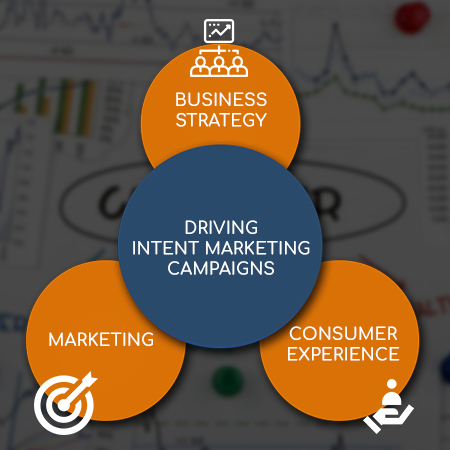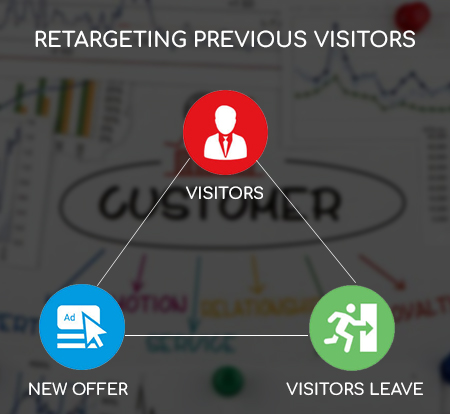How Location Data Works in Apps? How to Put it to Best Use?
Introduction
Location data can be an invaluable resource when it comes to activities like engaging customers. Insidious use of mobile devices has brought forth an extensive flux of user information like geolocation data, which is of immense value for marketers. More often than not, businesses lack the basic technical skill set to use this data to their advantage, even when they have easy access to it. To add to their vows there is the ever-changing regulation environ that makes it difficult to leverage the data at hand for the benefit of the business. Proximity marketing is one of the most popular applications of location data that many brands use to increase retail foot traffic. Some brands also use location data for improved attribution analysis to assess marketing effectiveness of their business strategies. Given the right knowledge and skill set, businesses can tap the unharnessed potential of geolocation data to enhance their ROIs. Using location data derived from social media, businesses can attain vivid marketing intelligence. Before rushing into investing in location data, every business needs to learn how the technology behind location data works.
How Location Data Works in Mobile Apps?
Location data facilitates the collection of insights about the app users’ behaviour by tracking the activity of the mobile handset with an app when it is in a specific range. As of today, there are two popular technologies that support location data.
- Geofencing
A geofence can be described as a virtual fence around a certain area. The technology allows businesses to target their customers and track their behaviour within a specific geographical range. A geofenced area can be very big or quaint depending on the needs of the business or brand using the technology.
- Beacons
A beacon is essentially a small device that emits out signals via Bluetooth. Beacons usually target a location using a unique identifier. Bluetooth devices in that particular area then receive these signals from the beacon and send out relevant push notifications for the users.
How to Choose Between Geofencing and Beacons for Your Business?
Both Geofencing and beacons have some things in common. However, they are used in fundamentally different ways and count on different technologies. Every business needs to select the location data technology that is right for it. Here is a table explaining the main difference between both:
How to Put Consumer’s Location Data to Best Use?
I. Driving Intent Marketing Campaigns
Intent marketing aims to meet a user’s intent at the moment, and bring back hefty revenues with it by serving just what’s asked for. If a business starts paying attention to the consumer and his/her intent, it can turn around their ROI for good. The modern-day consumer doesn’t need to speak what he wants, instead showcases his intent through data. Not too long ago businesses took clues to form user’s web browsing history to serve their intent. Today, location-based data can be used to draw insights about intent and drive sales.
II. Use Location Data to Send Relevant Notifications
Businesses use location data to send relevant push notifications to its consumers, who have signed up for them. As soon as a customer enters a particular area, he can be reached out by brand stores in that area with notifications of offers and information that can be of interest to him.
III. Tracking Key metrics with Location Data
Very often businesses track a consumer’s activity when it is in a particular area. They track when he enters the area, leaves it and the span of time he stays in it. Such knowledge can be of invaluable importance when it comes to teaching consumer behaviour.
IV. Making Smart Apps Smarter Still
Both beacon technology and geofencing can be used to improve smart home apps. Small functions like turning on the music and light that vary from room to room can be handled with beacons. While functions that span over a larger area like figuring when someone leaves the house can be done with geofencing.
V. Retargeting Previous Visitors
Reaching out to an existing customer or previous visitors with new offers in a popular exercise in the world of marketing. Retargeting an old visitor gives a brand more chances of converting it into a sale then converting a brand new visitor. Location data can be a precious tool for the business because of its instant nature. It offers real-time insights to businesses allowing targeting to occur at the moment when the customer is in an appropriate frame of mind for engagement followed by conversion. Many brands make sure that they send relevant CTAs like push notifications or sponsored ads to customers as soon as they enter a predefined location to make sales.
VI. Gaining Insights into Population Movements
Location data can help businesses with decisions that lie far beyond marketing. Numerous geofences around a city or area at large can give brands an idea about people’s movement over a period of time. Brands can analyse the times of day or days of the week people visit a location the most. Data from heat maps you can also depict the concentration of people in a given area. Thus, with location data brands can strengthen their distribution network by focusing on the area with larger customer footfall.
VII. Testing Promotional Campaign Efficiency
Location data can be a fine measure of the performance of a campaign that the business is running online and offline. Say for example a certain number of people engaged with your offline booth and were handed over free samples to try. With location data, you can tell exactly how many of them revisited the store in a short span to make a purchase of the product of which they were handed free samples. Same holds true in case of online digital marketing campaigns when it comes to location data.
VIII. Creating Shop-Engaging Store Maps
Location data can educate you about how customers navigate your store. With location data, you can have a digital map of your store in place and track customer flow through the layout of the store to analyze their movements. This with help you identify any hiccups, chokepoints or bottlenecks in the layout that adversely affects the revenues of the business. The insights drawn from location data can then be used to decide product allocation within and around the shelves to ensure a better customer experience.
IX. Configuring Shopping Patterns
It is important for a business to configure a consumer’s shopping pattern to find an opportunity to re-engage him. Location data can be a convenient determinant of underlying patterns that users have while they shop. With location data, brands can have developed insights about consumers shopping habits, time of the day they prefer to shop at, any affinity for particular brands etc. All this knowledge about a person’s shopping habits can give businesses a unique opportunity to engage him/her at the right time and with the right product.
X. Acquisition & Investments
With the growing popularity of location data, asset managers are trusting the insights derived to make investments on behalf of the business. The foot traffic patterns as depicted in terms of data can help you compare your own business to competitors. Decisions like leasing out a store or land for office space to develop and build a new business can be nailed with location data.
Conclusion
There are no qualms about the fact that information is the all-important resource for any business. The retail market atmosphere is ever-evolving and location data helps a business keep up with it. When used to its full potential, information can help improve customer services to lead the business towards success. It can transform the customer shopping experience on the whole. Location data also leverages a business with competitive intelligence. Insights about where people go shopping in the real world and online, how they interact with your competition can help it make better and informed decisions about everything from product pricing to promotional strategies. To make the most of location data generated with help of technologies, businesses must monitor business locations for social media content shared online. They must identify topics of customer interest and take note of sentiments expressed.
We at Promatics Technologies, help businesses integrate their virtual presence with location tracking technologies. We understand the markets in which the businesses operate, the behaviours and motivations of its customers, communities and prospects and design apps that take help of location data to gauge foot traffic patterns around areas they function in.
Still have your concerns?
Your concerns are legit, and we know how to deal with them. Hook us up for a discussion, no strings attached, and we will show how we can add value to your operations!


